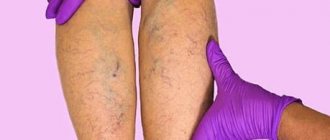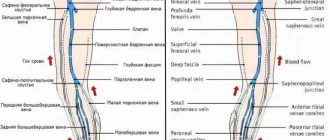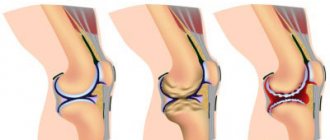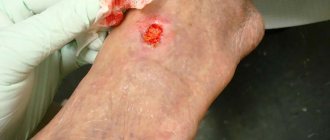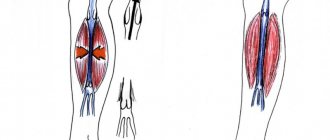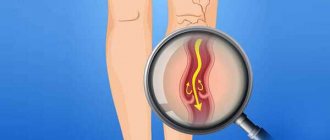Lymphedema is the accumulation of excess fluid between tissues. Most often, the disease affects the extremities (upper and lower). Lymphedema is associated with disruption of the function and integrity of the lymph nodes and vessels, which play the role of a filter in the body and are an important part of the immune system. Lymphedema leads to severe swelling of the arms and legs, which causes many problems: difficulty in moving, and the affected tissues are more susceptible to severe inflammation and infection. Treatment of the disease must begin at the first signs. In this case, the likelihood of inhibition and elimination of the pathological process increases significantly. Only a specialist can recognize lymphedema and prescribe adequate treatment.
Treatment of lymphedema in Moscow is performed at the Yusupov Hospital. There are doctors here who have extensive experience in eliminating such ailments. At the Yusupov Hospital, lymphedema is treated using effective therapy methods that help improve the patient’s condition and restore the functioning of the body’s systems.
Lymphedema
Lymphedema is a disease that manifests itself as soft tissue swelling. The cause of edema is a violation of the outflow of fluid from the intercellular and intertissue space into the lymphatic system. The lower extremities are most often affected. The disease is quite widespread. According to statistics, every tenth inhabitant of the planet suffers from such disorders. In approximately ten million people, it is diagnosed as a complication of an acute or chronic infection. Among patients with peripheral vascular lesions, about 2.5-7% are patients with lymphedema.
Literature
- Yudin V.A.. Savkin I.D. Treatment of lymphedema of the extremities [Electronic resource] // Journal “Russian Medical and Biological Bulletin named after. Academician I.P. Pavlova, 2015.
- Larinsky N., Byalovsky Yu., Ivanov A. Magnetic therapy with a running field in the complex treatment of postmastectomy lymphedema of the upper extremities [Electronic resource] // Doctor Magazine, 2021.
- Yarema I.V., Aliev M.M., Sipratov V.I. Chronic lymphovenous insufficiency of the lower extremities and lymphoscintigraphy [Electronic resource] // Medical scientific and practical portal “Attending Doctor”, 1999.
Classification of lymphedema
It is customary to divide lymphedema into two types: primary (congenital) and secondary (acquired).
Primary lymphedema. The cause of the disease is congenital pathology of the lymphatic vessels. Diagnosed in childhood or adolescence, about 80% of cases are detected in girls under 18 years of age. Mostly, disorders occur in the lower extremities, less often in the upper extremities, the lesion is usually bilateral. Heredity plays a role in 6% of all cases of the disease. Congenital lymphedema is associated with genetic diseases such as Nonne-Milroy syndrome and Meige syndrome. In all other cases, the cause of the disorders is aplasia or hypoplasia of the lymphatic vessels. Often, primary congenital lymphedema is compensated at a young age and hardly manifests itself. Progression may occur during pregnancy, after childbirth, or as a result of trauma.
Secondary or acquired lymphedema. The lymphatic system is affected due to various external factors. These may be previous infections, such as erysipelas, various types of injuries, burns, operations on lymphatic vessels. A severe, pronounced course of lymphedema is observed when a violation of lymph flow is combined with venous stagnation, as well as after removal or irradiation of inguinal and axillary lymph nodes. Secondary lymphedema is much more common than primary lymphedema.
Symptoms of lymphedema
With lymphedema, patients experience pain in the affected limb, heaviness, weakness, a feeling of fullness, and joint mobility is often limited. The skin is pale, the venous pattern is not visible, the skin fold is significantly thickened.
Congenital lymphedema first develops in the distal extremities of the feet or hands. Patients experience dense and painless swelling of the fingers, which gradually spreads to the entire foot, as well as to the ankle joint. If the hand is affected, first the fingers, hand, and then the wrist joint swell. Progressive lymphedema moves to the lower leg and thigh, shoulder and elbow. The lower limbs resemble the legs of an elephant or a column. Folds of soft tissue begin to form around the joints with significant swelling. The folds on the back of the foot are not pronounced. The skin becomes like the peel of an orange.
With secondary lymphedema, the process begins from the proximal parts, slightly below the level of the lymph nodes damaged by pathological changes. Then the swelling smoothly moves to the distal sections. It should be remembered that lymphedema often appears a long time after removal or damage to the lymph nodes. There are cases when patients notice the first signs of the disease ten or even fifteen years after surgery, injury, burn or irradiation of the node.
Symptoms and clinical picture
If lymphostasis affects an arm or leg, you may notice the following symptoms:
- Severe swelling of a limb or part of it (including fingers);
- Feeling of pressure, fullness, heaviness in the affected part of the body;
- Significant thickening of the skin (fibrosis);
- Formation of large transverse folds on the fingers;
- Pain and discomfort at the site of the lesion;
- Limitation of range of motion;
- Formation of ulcers;
- Elephantiasis;
- Recurrent infections.
Edema can be barely noticeable or reach global volumes, up to the manifestation of significant asymmetry of the diseased and healthy limb. As swelling increases, the patient feels constant fatigue and is haunted by a feeling of “heaviness” of the affected leg or arm. There are also psycho-emotional reactions that are reflected in serious psychological complexes.
Elephantiasis, characteristic of the later stages of the disease, leads to immobilization and disability.
Long-term accumulation of fluid and proteins in tissues leads to constant inflammation and subsequent scarring. Cysts and fibrosis develop. The thickened skin in areas of tight swelling is irritated, becomes scaly and covered with cracks. Stagnation of lymph creates a favorable environment for the penetration and spread of pathogenic microorganisms in the bloodstream. The patient may experience a secondary fungal or bacterial infection. There is an increase in the sensitivity of local tissues, often accompanied by hyperemia and hyperthermia.
There are three successive stages of secondary lymphostasis:
- Minor transient swelling;
- Severe irreversible swelling;
- Elephantiasis.
Edema may be accompanied by additional symptoms:
- Itching and burning;
- Tingling;
- Skin rash;
- Chills and fever.
Progressive irreversible swelling leads to contractures and deforming osteoarthritis. These factors lead to limited functionality.
Diagnosis of lymphedema
At the first signs of the disease, you should contact a phlebologist. The doctor makes a diagnosis based on anamnesis, general examination, and measurement of the volume of the limbs. The condition of small lymphatic vessels (lymphangions) is assessed using lymphangiography. If the vessels on the lymphogram resemble beads or spindles in shape, then their motility is normal. When patency is preserved, but motor function is impaired, and hence lymph transport, the vessels will be evenly filled with contrast. In congenital lymphedema, hypoplasia of the lymphangions is detected; acquired lymphedema is characterized by a change in their shape, extravasation, and filling of the skin lymphatic network.
The dynamics of the process are studied using lymphoscintigraphy. During the study, they look at how the isotopes spread, and based on the nature of this distribution, they evaluate the characteristics of the lymph flow (main, diffuse, collateral), and also identify signs of complete lymphostasis.
Nowadays, new research methods are increasingly being used, which are gradually replacing lymphangiography. These include magnetic resonance imaging or MRI, computed tomography, and duplex scanning.
conclusions
Lymphedema of the extremities is swelling in the tissues due to the accumulation of lymph fluid. There are differences between the congenital (primary) and acquired (secondary) forms of the disease; the latter is much more common. Lymphedema of the extremities is accompanied by visible but decreasing swelling or irreversible swelling. Skin changes also appear (growths, inflammation, poorly healing wounds).
Congenital lymphedema occurs against the background of malformations of the lymphatic system. The acquired form of the disease can result from surgery and radiation as part of cancer treatment.
Therapy is prescribed after diagnosis, which includes studying the medical history (anamnesis), physical examination (scanning), and, if necessary, scintigraphy. Treatment combines compression therapy, lymphatic drainage, exercise and skin care. Surgery is performed in rare cases.
Before treating lymphostasis, consult an experienced doctor at the Medscan clinic in Moscow. Only a specialist can make a correct diagnosis by conducting a comprehensive examination. Treatment is prescribed based on diagnostic results.
Complications of lymphedema
Tissue trophism during lymphedema is disrupted, and individual areas of increased keratinization of the skin or hyperkeratosis may occur. Cracks, small and large ulcers appear on the skin. In some cases, lymphatic fistulas can be observed between the fingers. Any lymphedema, both primary and secondary, can be complicated by streptococcal infection of the skin and subcutaneous tissue (erysipelas). Often it turns into phlegmon, which gives rise to further obliteration of lymphatic vessels and rapid progression of the disease. Long-term course of secondary lymphedema often leads to the development of lymphangiosarcoma.
Treatment of lymphedema
At the initial stages of the disease, when there are no organic changes in the soft tissues, lymphedema can be treated conservatively. Therapy includes a special diet, physical therapy, physiotherapy, and balneological treatment. To slightly reduce the volume of the diseased limb, it is recommended to wear a bandage, do a special lymphatic drainage massage, and variable hardware pneumocompression. Thanks to complex therapy, which is now actively used in phlebology, it is possible to significantly slow down the progression of lymphedema. Some patients even experience regression of symptoms after a course of treatment.
Surgical treatment is aimed at creating new bypass pathways for lymph drainage. Before surgery, lymphatic vessels are stained for better visualization. Then they try to identify the maximum number of small and large vessels in the popliteal fossa or on the thigh, in the area of Scarpa’s triangle. The isolated vessels are crossed among themselves, then their ends are coagulated with a special device. The next stage is the creation of anastomoses between the saphenous veins and the peripheral ends of the vessels. If surgery is performed in time, normal lymph flow can be completely restored. Even after a long and severe course of the disease, surgical methods can significantly reduce tissue swelling and improve their trophism.
Prevention of lymphedema
Patients with lymphedema need to be careful not to create an additional obstruction to the drainage of lymph. It is not recommended to carry bags on the sore arm, cross your legs, or wear too tight socks or stockings that pinch your limbs. It is not recommended to even measure pressure on a sore arm. Be sure to practice proper hygiene. You cannot prepare food without protective gloves, and you should never walk barefoot. Correct diagnosis of the disease at its initial stage will allow you to quickly choose a treatment method, eliminate the causes of lymphedema, and prevent its further development. Therefore, at the slightest symptoms you should consult a doctor.
Where is lymphedema treated in Moscow
Treatment of lymphedema is performed efficiently at the Yusupov Hospital. Qualified specialists work here who will select the most optimal method of treating the disease. Treatment of lymphedema at the Yusupov Hospital makes it possible to stop the development of pathology and improve the patient’s condition. The hospital has established oncology treatment and rehabilitation clinics, where they provide effective treatment for diseases of varying complexity and subsequent restoration of lost functions.
In the event of the development of cancer in the Yusupov Hospital, you can undergo diagnosis and treatment by experienced specialists. Further management of the patient is carried out by doctors from the Oncology and Rehabilitation Clinic. In the rehabilitation center, the patient is provided with all the necessary services to normalize his condition. Professional exercise therapy instructors, massage therapists, nutritionists and other specialists work with patients to help cure lymphedema. Patients are given an individual treatment plan depending on the nuances of their condition and the type of lymphedema.
The Yusupov Hospital treats lymphedema of any complexity. Doctors take on the most difficult cases and achieve maximum results.
You can make an appointment with rehabilitologists and other specialists at the rehabilitation clinic, find out information about the work of the rehabilitation center and other questions of interest by calling the Yusupov Hospital.



